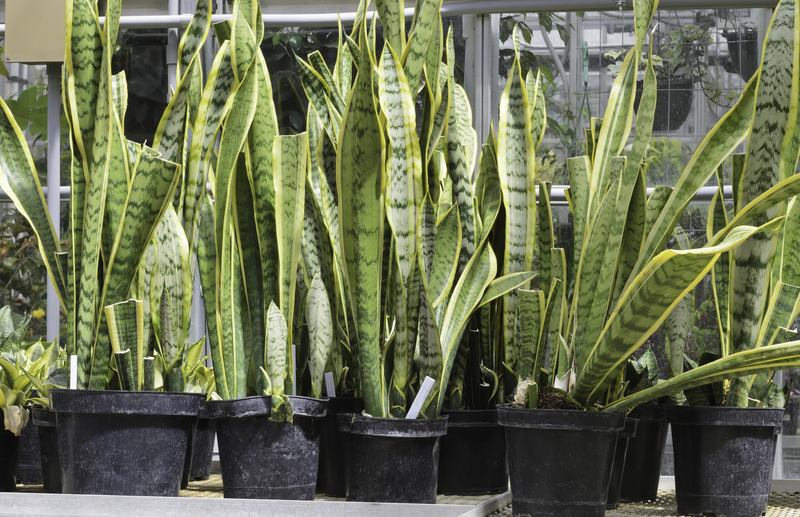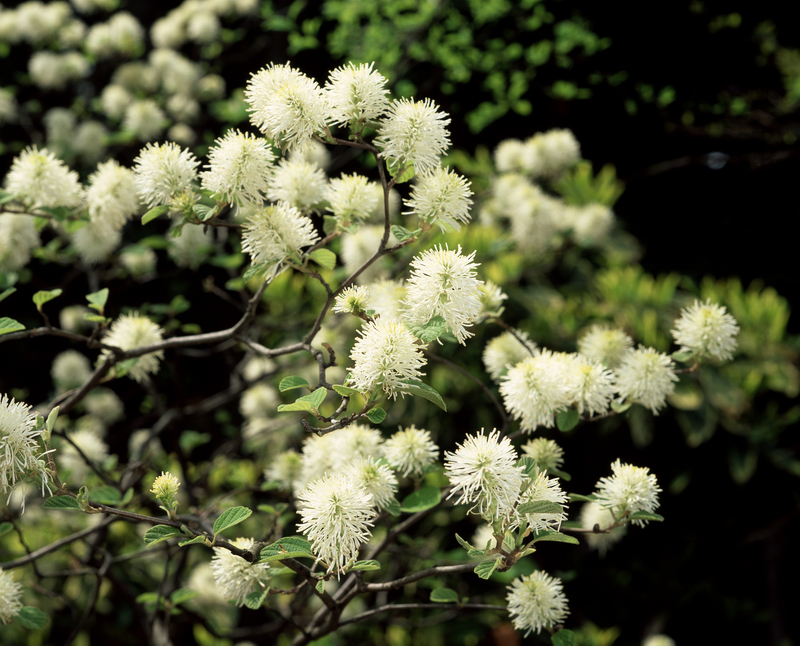Building a Vertical Oasis with Vertical Gardening
Posted on 22/06/2025
Building a Vertical Oasis with Vertical Gardening
Welcome to the inspiring world of vertical gardening, where any empty wall or tiny balcony can be transformed into a lush, green sanctuary. Whether you're living in an urban apartment or simply looking to maximize your outdoor or indoor space, building a vertical oasis is a practical, attractive, and eco-friendly solution. In this comprehensive guide, learn everything you need to know to create your own flourishing vertical garden oasis--from design principles and plant selection to care tips and creative ideas!
What is Vertical Gardening?
Vertical gardening is the art and science of growing plants upwards--utilizing vertical space, such as walls, fences, or shelving--rather than outwards on the ground. With increasing urbanization and the reduction of garden space, vertical gardens offer a unique opportunity to bring greenery into confined or unconventional areas. They are also called green walls, living walls, or vertical planters.
- Save space by growing upwards
- Beautify bare walls and fences
- Improve air quality and indoor climate
- Reduce heat and noise in urban areas
- Enhance mood and well-being through contact with nature

Why Build a Vertical Oasis?
Building a vertical garden oasis is more than just an innovative way to display your favorite plants. This gardening method brings a host of benefits to your home or workspace:
- Space Maximization: Grow more plants even in the smallest areas.
- Natural Insulation: Living walls can help regulate temperatures by providing an extra layer of insulation.
- Cleaner Air: Vertical greenery filters toxins and provides fresher air.
- Aesthetic Appeal: Vertical gardens serve as breathtaking focal points indoors or out.
- Increased Property Value: Beautiful green installations can enhance the value and charm of any property.
- Therapeutic Benefits: Being surrounded by plants has been shown to reduce stress and promote well-being.
Planning Your Vertical Garden Oasis
Assess Your Space
Evaluate your available area for your vertical garden wall. Is it indoors or outdoors? What is the orientation (north, south, east, or west)? How much sunlight does it receive? Consider vertical surfaces such as:
- Balcony walls
- Garden fences or deck railings
- Interior living room walls
- Kitchen backsplashes
- Corridors or stairways
*Tip: You can design a vertical oasis nearly anywhere, as long as there's adequate light.*
Choosing a Vertical Garden System
There are various systems and structures you can use to build your vertical plant oasis. Your choice will depend on budget, design goals, and plant selection. Here are the most popular options:
- Wall-Mounted Panels: Pre-made panels or felt pockets specifically designed for living walls.
- Pallet Gardens: Upcycled wooden pallets outfitted with landscaping fabric, filled with soil and plants.
- Treillis and Climbing Supports: For vines and climbing plants--train them up sturdy lattices or mesh screens.
- Potted Vertical Stands: Tiered or stacked containers create a movable, modular garden.
- DIY Pocket Planters: Use fabric pockets, recycled bottles, or felt shoe organizers hung vertically.
- Tower Gardens: Cylindrical or multi-level planters ideal for small balconies or patios.
Designing Your Vertical Oasis
Plant Selection: Best Choices for Vertical Gardening
Selecting the right plants is vital when cultivating a flourishing vertical garden oasis. Consider the light, wind, and moisture conditions of your chosen spot and pick species accordingly. Here's a breakdown of the most suitable plants:
- Ferns: Adapt well to vertical living walls, especially indoors or in shady spots.
- Pothos & Philodendrons: Robust trailing plants, perfect for beginners and indoor spaces.
- Succulents & Cacti: Need bright light and minimal water; awesome for sunny balconies.
- Herbs: Basil, thyme, oregano--delightful and practical for kitchens and balconies.
- Ornamental Grasses: Lightweight, add texture, and thrive with minimal maintenance.
- Flowering Annuals: Petunias, marigolds, or impatiens for vibrant seasonal color.
- Climbing Vines: Jasmine, clematis, or ivy for lush, rapid coverage.
- Leafy Greens: Spinach, lettuce, or Swiss chard for an edible vertical oasis.
Pro Tip: For vertical garden walls in full sun, pick heat- and drought-tolerant species. In the shade, ferns and mosses thrive.
Soil & Growing Medium
Most vertical gardening systems use lightweight, well-draining soil mixed with organic matter. For panels or pockets, ensure the medium can retain moisture but not become waterlogged.
- Use coco coir, peat-free compost, or lightweight potting mix for best results.
- For hydroponic setups, specialized substrates or growing mats are used instead of soil.
Watering & Irrigation
Effective watering is essential for a thriving vertical garden wall. Options include:
- Drip Irrigation: Automates watering and conserves water.
- Hand Watering: Suitable for small or indoor installations.
- Self-Watering Planters: Some vertical garden kits include reservoirs that reduce maintenance.
It's wise to check the system for leaks or excess runoff, especially on indoor vertical gardens.
Lighting Needs
Light exposure is a defining factor in vertical plant oasis success. Survey natural light availability and supplement with grow lights if necessary, especially indoors.
- South-facing walls get the strongest sunlight.
- Low-light options: Choose shade-loving foliage and use full-spectrum LED grow lights when needed.
Constructing a Vertical Garden: Step-by-Step Guide
Step 1: Select Your Vertical Garden System
- Pick a frame, panel, trellis, or pocket planter suited to your space and skill level.
- Ensure it fits securely and won't damage your walls or balcony structure.
Step 2: Prepare Your Site
- Clean the wall or fence and patch up any damages.
- Install waterproof backing for indoor installations to prevent moisture damage.
- Mark out your vertical garden layout with a pencil or tape.
Step 3: Arrange Plants and Soil
- Layer your chosen soil, substrate, or growing medium.
- Arrange plants from the bottom upward for easy establishment and watering.
- Space plants according to their mature size for best air circulation.
Step 4: Install the Irrigation System
- Lay drip lines along rows or behind panels.
- Test for even water distribution.
- Alternatively, add water reservoirs to self-watering planters.
Step 5: Mount and Secure the Structure
- Use sturdy hooks, screws, or brackets.
- Double-check for safety, especially with heavier installations.
Step 6: Maintenance and Care
- Check moisture levels regularly and adjust watering as seasons change.
- Prune and deadhead for continuous growth and visual appeal.
- Add liquid fertilizer or compost every few weeks for nutrients.
- Monitor for pests--vertical gardens are less prone, but vigilant care is wise.
Creative Vertical Garden Ideas for Your Oasis
Vertical gardening offers infinite creative possibilities, limited only by your imagination. Here are some inspiring ideas to bring your vertical oasis to life:
- Edible Living Wall: Combine herbs, salad greens, and dwarf vegetables for a space-saving kitchen garden.
- Pollinator Paradise: Grow a mix of nectar-rich flowers to attract butterflies and bees.
- Privacy Screen: Use lush vines and tall leafy plants to create living privacy fences on balconies.
- Upcycled Planters: Repurpose old shoe organizers, wooden crates, or plastic bottles for eco-friendly vertical gardens.
- Interior Tranquility: Indoor vertical walls of ferns, pothos, and peace lilies to boost air quality and serenity.
- Succulent Mosaic: Arrange succulents and small cacti in artistic patterns for living wall art.
- Children's Sensory Wall: Use fragrant herbs, textured plants, and edible flowers for a fun family gardening project.
Common Challenges in Vertical Gardening & Solutions
Even the most experienced gardeners may face challenges when constructing a vertical plant oasis. Here's how to overcome the most common issues:
- Uneven Watering: Integrate drip irrigation or watering globes to ensure all plants receive moisture.
- Soil Erosion: Use coco coir mats or geotextiles behind panels to stabilize soil.
- Sunburned Leaves: Shield sensitive species or relocate the structure based on sunlight patterns.
- Plant Overcrowding: Prune regularly and plan initial spacing to allow for growth.
- Pest Infestation: Employ natural pest control, such as neem oil, and maintain regular inspections.
- Structural Damage: Always ensure proper mounting and add waterproof layers when building indoors.

Eco-Friendly Advantages of Vertical Gardening
Building a vertical oasis doesn't just enhance your living environment--it also benefits the planet:
- Urban Cooling: Vertical gardens help lower temperatures in cities, reducing the urban heat island effect.
- Wildlife Habitat: Living walls provide shelter and food for birds, bees, and butterflies.
- Reduced Carbon Footprint: Plants absorb carbon dioxide and improve air quality.
- Less Land Use: Growing upwards means less demand for precious green land.
- Water Conservation: Drip irrigation minimizes waste and runoff.
- Recycling Opportunities: Many vertical garden structures can be fashioned from upcycled or recycled materials.
Conclusion: Your Own Vertical Oasis Awaits
Transforming any space into a vertical garden oasis is achievable for gardeners of every skill level. Whether your aim is to cultivate herbs in a bright kitchen, add visual interest to a drab exterior wall, or purify the air in your office, the world of vertical gardening is open to you.
Ready to turn your blank wall into a spectacular, oxygen-producing work of art? Start planning your vertical plant oasis today--you'll reap rewards in beauty, health, sustainability, and pure, everyday joy.
FAQs about Building Vertical Gardens
- Q: Can I build a vertical garden on a rental property?
A: Absolutely. Opt for freestanding vertical planters or lightweight pockets that can be hung without drilling. - Q: Which plants should I avoid in vertical gardens?
A: Avoid heavy-rooted or aggressive species like bamboo. Focus on lightweight, compact, and shallow-rooted plants. - Q: How do I fertilize a vertical garden?
A: Liquid fertilizers work well through irrigation systems. Use organic compost teas for a natural boost. - Q: Are vertical gardens high maintenance?
A: With good planning (drip irrigation, proper plant selection), vertical gardens require minimal maintenance beyond regular watering and trimming.
Begin building your own vertical oasis with these tips, infuse a touch of green into your life, and discover the space-saving magic of vertical gardening!



